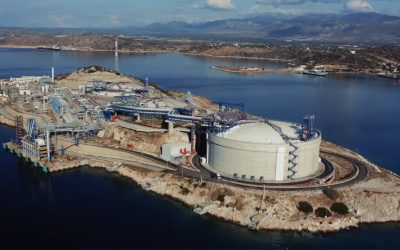Acronyms used in this article:
- NOAA – the U.S. National Oceanic and Atmospheric Administration
- NCDC – the U.S. National Climatic Data Center
- SOTC report – State of the Climate report (issued by NCDC for every month, early in the following month)
- USHCN – United States Historical Climatology Network
- CONUS – an area that corresponds to the continental U.S. but not including Alaska
In my FCPP blog OpEd posting of January 7, 2013, “Meteorologist discovers U.S. government announcing records before all data analyzed; ‘warmest ever’ July not true” , I promised to update readers when I had analyzed responses to my queries of NOAA’s NCDC. Here is that update.
In his e-mail to me, Deke Arndt, NCDC Climate Monitoring Chief wrote, concerning the difference between the “average U.S. temperature” in the July 2012 SOTC report (issued in early August 2012) and that currently in the NCDC database:
“The differences seen in the CONUS temperature for July 2012 are not due to late arriving data. They are due to our change from version 2.0 to version 2.5 of the US Historical Climatology Network (USHCN), from which we calculate the CONUS temperature index.”
So, this suggests that July 2012 was unusual in that late arriving data apparently did not change the temperature at all when all the data as analyzed. This seems difficult to reconcile with the following statement that NCDC includes in all of their SOTC reports (now hidden at the end of the reports as discussed previously), including that for July 2012:
“All of the temperature and precipitation ranks and values are based on preliminary data. The ranks will change when the final data are processed, but will not be replaced on these pages.”
Mr. Arndt himself explained in a later e-mail, concerning a correction NCDC applied to the data on October 19:
“The slight changes in the anomalies and associated ranks with the October 19 correction are reflective of late-arriving data, and are typical.”
I will ask Mr. Arndt about this, specifically what it was about the July 2012, the supposed “warmest year” in the U.S. instrumental record that makes it atypical from a temperature data perspective.
Then Mr. Arndt laid out the two types of changes that were carried out on the data when moving from version 2.0 to version 2.5 of the USHCN (carried out in early October 2012 starting with the September 2012 SOTC report, he said):
1 – “we recalculated the baseline temperature upon which “anomalies” are compared, which were first computed nearly 20 years ago in an era with less available data and less computer power. In other words, we now have a better estimate of what is the average July temperature (and the average August, and September, and so on). This resulted in a cooler baseline value for all of the July values throughout the record. This component was applied equally throughout the record and does not affect the trend, nor does it change the characterization of 2012 temperatures as the warmest, nor does it change the relationship between one year and any other.”
Note that this would presumably result in constant differences between the temperatures in past SOTC reports (those based on version 2.0 USHCN temperatures), and the actual database of NCDC temperatures (all of which has been converted to version 2.5).
2 – “The other factor that affected the July 1936 temperature was the improvements to the methodology in v2.5.” [See here for detailed information]
“USHCN Version 2.5 improved the efficiency of the algorithm that confirms inhomogeneities (“breaks in the record” due to siting or instrumentation – documented or undocumented). This means that more of the previously undetected break points are now confirmed and corrections can be applied. The impact varies form station to station. Because, on average, the newer instrumentation reads “cooler” than the historical instrumentation (please see attached Menne et al., 2009 paper), the adjustments, on average, cool the deeper past data to better conform to the observing practices of today.”
So this second of the changes to version 2.0 data would appear to only affect older data since, at least in the last few years, there would presumably be no “undetected break points” against which corrections would need to be applied and recent data would have been collected using the “newer instrumentation”. This conclusion is supported by Mr. Arndt’s next comment:
“Speaking strictly to the July values that you are interested in: the July 2012 temperature decreased about two-thirds of a degree from v2.0 to v2.5, entirely due to the new baseline temperature for July. The July 1936 temperature cooled mostly because of this same baseline change (about two-thirds of a degree), but also an additional one-third of a degree due to the improved breakpoint detection.”
So, again, we see the claim that late arriving data had no impact on the change between July 2012 SOTC temperature data and the temperatures in the current database.
Anthony Watts showed that the difference between the temperatures in recent SOTC reports based on old data (version 2.0, which was used for all SOTC reports before September 2012) and the NCDC temperature database (based on the new data updated to version 2.5) varied widely, anywhere from 0.1 degrees F to 1.1 degrees F – see the following table.
 Table prepared by meteorologist Anthony Watts to show how temperatures changed between SOTC reports and the NCDC database.
Table prepared by meteorologist Anthony Watts to show how temperatures changed between SOTC reports and the NCDC database.
Since data this recent would have not been affected by factor #2 in the switch from version 2.0 to 2.5, then the impact of late arriving data is considerable in the temperatures in the above table and varies a great deal. Otherwise the difference between temperatures in recent SOTC reports and the database would be constant. Again, the idea that July 2012 was an exception to this trend does not seem credible.
The only way to answer this for certain would be to see what the NCDC temperature database looked like long enough after July 2012 that all updates due to late arriving data would have been incorporated into it, but before the early October 2012 switch from version 2.0 to version 2.5. Internet Archives do not allow one to see what the database looked like around, say, Sept 15, 2012, so, I will ask Mr. Arndt if there is some way to see it just before the conversion to version 2.5 was made. In the meantime, I welcome suggestions from readers as to how one would obtain this information.
If what Mr. Ardnt is saying is correct and the difference between the July 2012 SOTC report and that in the database is only due to the conversion to version 2.5, then the average U.S. temperature in the July 2012 SOTC report should be the same as the pre-version 2.5 database, while other months would show the impact of late arriving data.
As an aside, this new information answers Anthony Watts’ question about why the temperatures in the October and November 2012 SOTC reports had the same values as in the database. It is because, by the time the October and November 2012 SOTC reports were assembled, NCDC were using the USHCN version 2.5, the same as is now being used for the database. When Mr. Watts looked, the impact of late arriving data had not yet been incorporated into the database and so it showed the same temperatures as is in the SOTC reports. Since then, the late arriving data has cooled the November data by 0.23 degrees F, while not altering the October temperature data (at least, not yet).
Finally, Mr. Arndt explains:
“It is erroneous to compare the v2.0 version from one year to the version 2.5 version from another, as they refer to different baselines.”
Yes, he is right. We should not have been comparing the July 2012 temperature as derived with the USHCN version 2.5 with the July 1936 data derived from version 2.0.
Stay tuned for more updates as discussions with NDCD staff continue. Here are questions I put to Mr. Arndt that he has so far not addressed in our e-mail exchanges:
“Also, could you tell me if there was any announcement from NCDC or NOAA when the new July 2012 temperature turned out to be almost 0.7 degrees less that that announced in the SOTC report issued in early August 2012, please? If not, why was no announcement made? It certainly seems important given the huge coverage given to the July Tave as listed in the July 2012 SOTC report by many media across the world.”
“Can you tell me why all the SOTC monthly reports on the Web have not had corrections made to them (cross-outs and explanations as in the Sep 2012 SOTC report)? Media often go back to these reports and may very well compare them with current values in the latest SOTC reports and so would be very confused.”
_______________________________________________________
Tom Harris is Executive Director of the International Climate Science Coalition and an advisor to the Frontier Centre for Public Policy.



